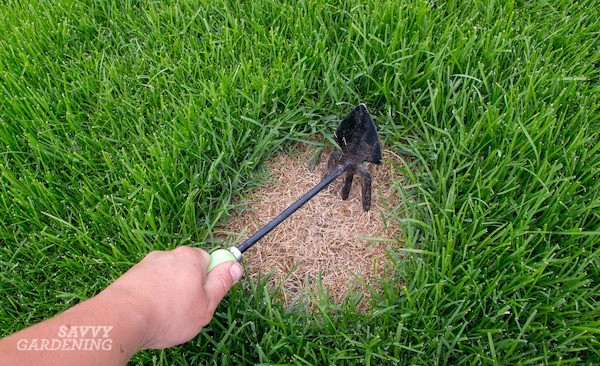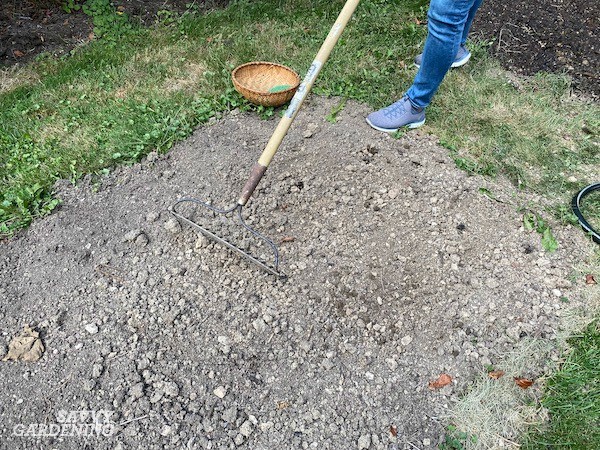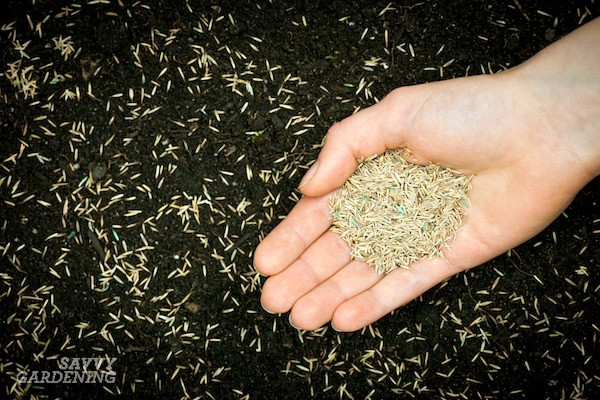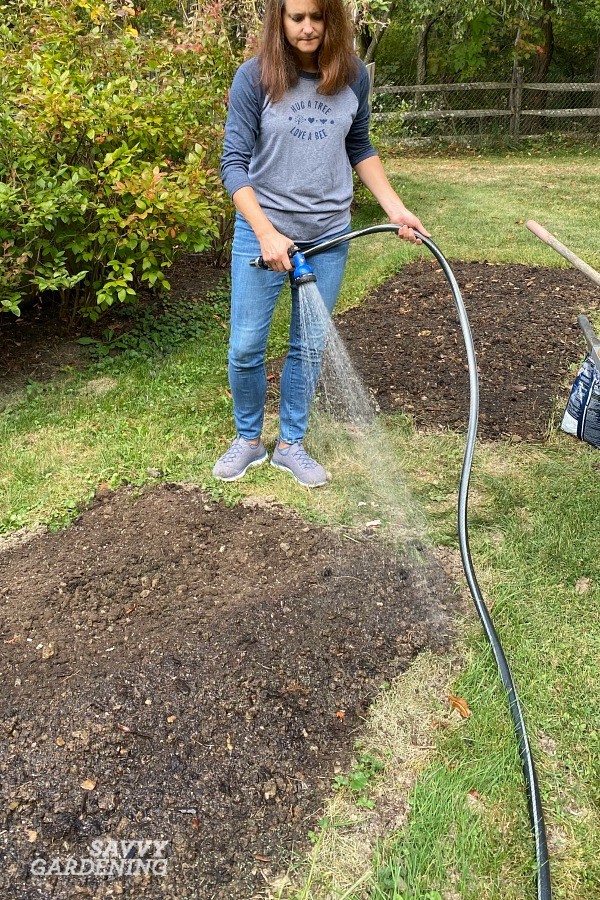Lawns are a quintessential part of the landscape for many homeowners, providing a space for relaxation, play, and enhancing curb appeal. Whether you’re aiming for a perfectly manicured carpet of green or a more relaxed, natural lawn, the journey often begins with planting grass seed. Perhaps you’re tackling bare patches left by pets or harsh weather, or maybe you’re establishing a brand-new lawn after construction. Whatever the reason, understanding How To Plant Grass Seed correctly is a fundamental skill for any homeowner looking to cultivate a beautiful outdoor space.
This comprehensive guide will walk you through each essential step to ensure successful grass seeding. From selecting the ideal grass seed for your climate to preparing the soil, planting techniques, and ongoing care, we’ll cover everything you need to know to achieve a thriving, verdant lawn.
Selecting the Best Grass Seed for Your Climate and Needs
The foundation of a successful lawn starts with choosing the right type of grass seed. Not all grasses are created equal; different varieties thrive in different climates and conditions. Understanding the distinction between cool-season and warm-season grasses is the first step.
Cool-season grasses flourish in regions with cold winters and mild summers, typically in the northern parts of the United States. Common cool-season grasses include:
- Kentucky Bluegrass: Known for its rich color and fine texture, it prefers sunny locations and requires moderate maintenance.
- Perennial Ryegrass: Germinates quickly and establishes rapidly, often used in mixes for fast coverage. It tolerates wear and tear well.
- Fescues (Fine and Tall): Offer good shade tolerance and require less fertilization than Kentucky bluegrass. Tall fescues are also drought-tolerant.
Warm-season grasses are best suited for areas with hot summers and mild winters, prevalent in the southern United States. Popular warm-season grasses include:
- Bermudagrass: Tolerates heat, drought, and heavy foot traffic exceptionally well, forming a dense, fine-textured lawn in sunny areas.
- Zoysiagrass: Known for its dense, carpet-like growth and good heat and drought tolerance. It’s slower to establish but forms a very low-maintenance lawn once mature.
- Centipedegrass: A low-maintenance option for acidic soils, requiring minimal fertilization and mowing.
The grass seed package label is your key source of information. It will specify the types of grass included in the blend and often indicate whether starter fertilizer is included. Crucially, avoid seed blends that contain weed control products, as these can harm delicate young seedlings.
Consider the amount of sunlight your lawn receives. Some grasses are more shade-tolerant than others. For personalized advice, reach out to your local garden center or agricultural extension office. They can provide tailored recommendations based on your specific location and soil conditions. Online resources like the USDA Plant Hardiness Zone Map and climate-specific grass guides can also be invaluable in making the right choice for your region.
While some seed brands include filler materials to aid in even distribution, these often add unnecessary cost without significantly improving results. Opting for a bag of high-quality, plain grass seed allows you to control your seeding rate and often provides better value.
Preparing the Ground: Setting the Stage for Success
Proper soil preparation is paramount for successful grass seed planting. Young grass roots are delicate and struggle in compacted soil. This step is crucial whether you’re overseeding bare spots or starting a new lawn.
For Bare Spots in Existing Lawns:
- Remove Dead Grass: Use a hand cultivator for small patches or a diamond hoe or warren hoe for larger spots to clear away dead grass and debris.
- Loosen the Soil: Dig down to a depth of 2-3 inches with a shovel or trowel. Break up any compacted soil and clumps to create a loose seedbed.
For Large Bare Areas or New Lawns:
- Loosen the Topsoil: Loosen the top 3-5 inches of soil. For large areas, a rototiller is efficient. For smaller areas, a shovel or hoe will suffice.
- Rake Smooth: Use a bow rake or seeding rake to break up any remaining soil clods and create a smooth, even surface. This ensures good seed-to-soil contact.
Pre-Watering:
The final crucial step in site preparation is to water the area thoroughly before planting. Moist soil encourages faster germination and provides immediate hydration to the emerging roots. Water deeply enough to moisten the top few inches of soil.
Planting Grass Seed: Techniques for Even Distribution
With the ground prepared, it’s time to sow the grass seed. Even distribution is key to preventing patchy growth and ensuring a uniform lawn.
- Small Areas: For patching bare spots or seeding small areas, hand-broadcasting the seed is effective. Gently fling the seed outwards, aiming for even coverage.
- Large Areas: For larger lawns, using a walk-behind broadcast spreader or a hand-held hopper spreader is recommended for consistent seed dispersal. Calibrate your spreader according to the seed package instructions to avoid over or under-seeding.
Aim for a seed spacing of approximately ¼ to ½ inch apart. While precise measurement isn’t necessary, visually assess the coverage to ensure evenness. Overcrowding can lead to competition among seedlings, hindering growth, while under-seeding can leave space for weeds to establish.
For drop spreaders, make overlapping passes, applying seed in one direction and then making a second pass perpendicular to the first. This cross-directional approach helps ensure uniform coverage and minimizes gaps.
Protecting and Nurturing New Grass Seedlings
Once the seeds are sown, covering them is crucial for protection and moisture retention. A mulch layer safeguards the seeds from birds, prevents them from drying out, and minimizes wash-away during rain.
Effective mulching options include:
- Straw (not hay): Straw is an affordable and readily available option. Ensure you use straw, not hay, as hay often contains weed seeds.
- Screened Compost: Provides nutrients as it decomposes and improves soil structure. Its dark color also helps warm the soil, promoting germination, especially in fall.
- Mushroom Soil: Similar to compost, it enriches the soil and aids in moisture retention.
- Erosion Control Mats: Biodegradable mats that provide excellent seed protection, particularly on slopes or areas prone to erosion. While more expensive, they are mess-free and effective.
Avoid using peat moss as mulch. Once dry, peat moss can become hydrophobic, repelling water and hindering seedling establishment.
Apply a thin layer of mulch, approximately ¼ inch thick. Over-mulching can impede seedling emergence. Compost and mushroom soil are particularly beneficial for fall seeding due to their heat-absorbing properties, which help maintain warmer soil temperatures for faster germination before winter.
After spreading the seed, cover the area with a mulch of straw, fine compost, or mushroom soil.
Germination Time and Watering: Patience and Hydration
Grass seed germination times vary depending on the grass type. Here’s a general guideline:
| Grass Type | Germination Time |
|---|---|
| Perennial Ryegrass | 3-5 days |
| Fescues | 7-10 days |
| Kentucky Bluegrass | 14-21 days |
| Warm-Season Grasses | 21-30+ days |




If you’ve used a seed mix, expect germination to occur over a range of times as different varieties sprout.
Consistent watering is critical during the germination and establishment phases. Keep the seeded area consistently moist, but not waterlogged.
- Initial Watering: Water immediately after planting to settle the seeds and mulch.
- Frequency: Water daily, or even twice daily in hot, dry conditions, to keep the top inch of soil consistently moist until germination. Reduce frequency to every other day in cooler temperatures.
- Depth: Water lightly and frequently during germination to keep the surface moist. Once seedlings emerge and begin to grow, water less frequently but more deeply. Aim to moisten the soil to a depth of about 3 inches once the grass is around 2 inches tall.
- Established Lawns: Once the lawn is established, reduce watering frequency to once or twice a week, watering deeply to encourage deep root growth. Water established lawns only when needed, ideally during prolonged dry periods.
- Watering Time: Water in the morning, if possible, to minimize evaporation and reduce the risk of fungal diseases.
Optimal Planting Times: Fall and Spring Advantages
Fall Planting:
Fall is often considered the best time to plant grass seed in many climates. The still-warm soil promotes robust root development, while cooler air temperatures discourage excessive top growth. This combination is ideal for establishing strong, resilient grass plants before winter. Fall typically brings more rainfall, reducing the need for frequent watering. Aim to plant when nighttime temperatures consistently drop to around 60°F (15°C). Keep an eye on the weather forecast and try to seed just before a day or two of predicted rain.
Spring Planting:
Spring is another favorable time, particularly in regions with long, cool springs. However, spring planting requires diligent watering throughout the spring and summer to prevent drought stress as temperatures rise. Consistent moisture is crucial for successful spring establishment. Early summer planting is possible but necessitates even more frequent watering.
Mowing and Fertilizing New Grass: Gentle Care
Mowing:
Begin mowing new grass when it reaches approximately 3 inches in height. Mow high during the first growing season, maintaining a cutting height of 3-4 inches. Ensure your mower blades are sharp to make clean cuts and avoid tearing the young grass blades, which can make them vulnerable to disease. Use a blade sharpener to keep them in top condition.
Fertilizing:
Avoid fertilizing at planting time, especially with synthetic fertilizers. These can be harsh on tender new roots and potentially cause burn. Instead, opt for top-dressing with compost (learn how to top-dress your lawn) or using an organic granular lawn fertilizer after the grass has been mowed approximately six times. Organic fertilizers are gentler and release nutrients slowly, promoting healthy growth without the risk of burning.
By following these steps, you’ll be well-equipped to plant grass seed successfully and cultivate a lush, healthy lawn that enhances your outdoor living space. With the right preparation, techniques, and ongoing care, you can achieve the beautiful lawn you’ve always wanted.